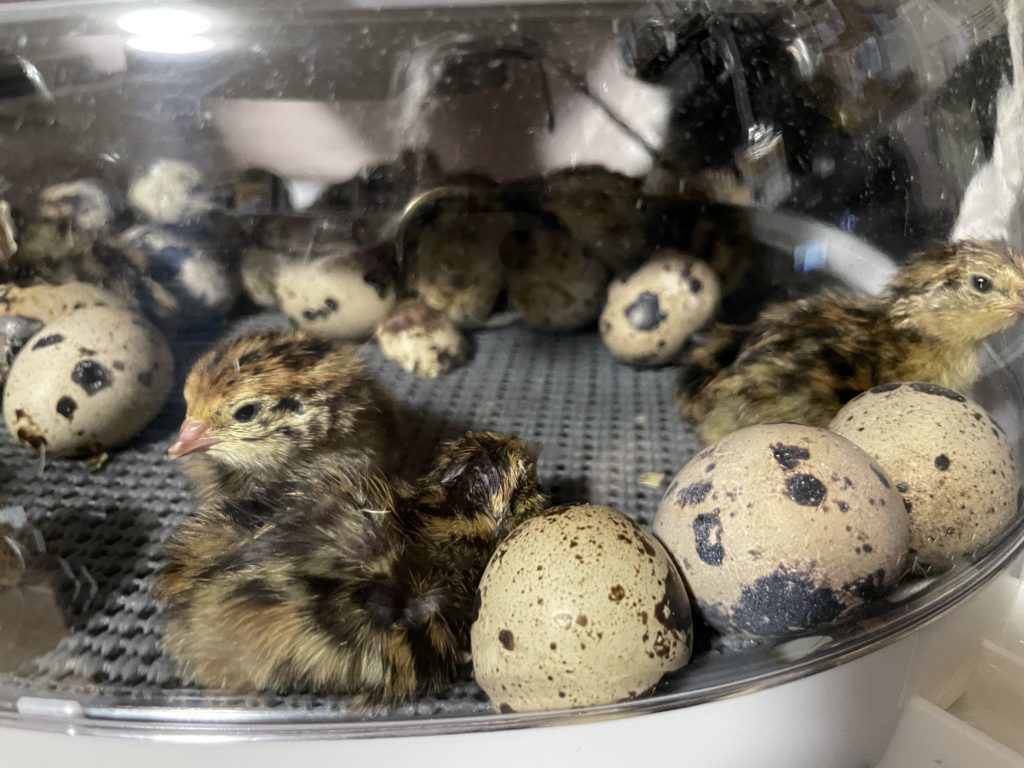One common question we receive is, “how long do coturnix quail eggs take to hatch?” This question is especially prevalent among new quail breeders and those considering venturing into the world of quail farming.
Understanding the hatching duration is crucial for planning, setting up the right environment, and ensuring the successful birth of healthy coturnix quail chicks. We will discuss the hatching process of coturnix quail eggs, factors that can influence the hatching time, and tips to ensure a successful coturnix quail hatch.
The Standard Coturnix Quail Egg Hatching Duration
Coturnix quail eggs, on average, take about 17 to 18 days to hatch. This period starts from the day the eggs are placed in the incubator and ends when the quail chicks fully emerge from their shells. It’s worth noting that while this is the average duration, slight variations can occur based on various factors, which we will discuss later.
The Coturnix Quail Hatching Process: A Day-by-Day Breakdown
- Days 1-7: During the initial week, the embryo begins its development. By the end of the seventh day, if you were to candle the quail egg (shine a light through it in a dark room), you would notice a network of veins indicating that the embryo is growing.
- Days 8-14: The embryo continues to grow, and its features become more defined. By day 14, the embryo has almost filled the entire space inside the quail egg. If candled, the egg will appear darker due to the size of the developing chick.
- Days 15-17: This is a critical period as the chick prepares to hatch. It will start to position itself with its head towards the larger end of the egg, where the air sac is located. This positioning is vital for the chick’s first breath.
- Day 18: By this day, most chicks are ready to hatch. They will use their egg tooth (a small, sharp, temporary structure on their beak) to pierce the shell, a process known as “pipping.” Once the chick has made the initial break, it will rest for some hours before continuing to chip away at the shell in a circular manner until it can push its way out.
Factors Influencing Hatching Time
Several factors can influence the exact hatching time of coturnix quail eggs:
Temperature: The ideal temperature for incubating coturnix quail eggs is between 99.5°F and 100°F (37.5°C to 37.8°C). Fluctuations outside this range can either speed up or delay hatching.
Humidity: Maintaining a humidity level of 45-50% for the first 14 days and then increasing it to 55-60% for the last few days is crucial. Inadequate humidity can make it difficult for the chick to break the shell.
Egg Handling: Eggs that are handled too often or are older than ten days when placed in the incubator might have a delayed or unsuccessful hatch.
Genetics: Some quail lines might hatch a bit earlier or later than others due to genetic factors.
Tips for a Successful Hatch
Regularly turn the eggs: For the best results, eggs should be turned at least three times a day until day 14. This prevents the embryo from sticking to the shell.
Avoid opening the incubator: Especially in the last few days, it’s essential to maintain a stable environment.
Cleanliness: Ensure the incubator is clean to prevent bacterial growth that will negatively impact the embyos and chicks.
Post-hatch care: Once the chicks hatch, they can stay in the incubator for 24 hours to dry and gain strength. After that, they should be moved to a brooder with a heat source.
While the average hatching time for coturnix quail eggs is 17 to 18 days, success largely depends on providing the right conditions and understanding the factors that influence the hatching process. With proper care and attention, you can look forward to the delightful experience of seeing these tiny birds emerge and begin their journey of life.
